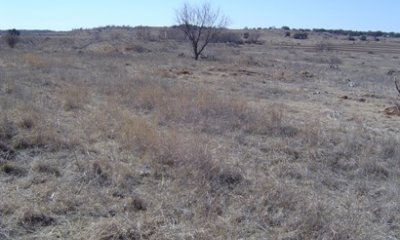
Clay Slopes 26-33" PZ
Scenario model
Current ecosystem state
Select a state
Management practices/drivers
Select a transition or restoration pathway
- Transition T1A More details
- Transition T1B More details
- Restoration pathway R2A More details
- Transition T2A More details
-
No transition or restoration pathway between the selected states has been described
Target ecosystem state
Select a state
Description
The Mixed-grass Prairie Community (1.1) is the interpretive plant community for the Clay Slopes Ecological Site. Big bluestem occupied favorable micro-sites and was locally dominant, especially in the northern portion of the area. Also occurring on the site, but in smaller amounts were Indiangrass and switchgrass. Little bluestem, Arizona cottontop, sideoats grama, tall dropseed, and vine-mesquite were common midgrasses. It is estimated that the Mixed-grass Prairie Community (1.1) produced from 2000 to 4500 pounds of biomass annually.
The Midgrass Prairie Community (1.2) is a prairie dominated by midgrasses being encroached by indigenous or invading woody species that had been held at low densities by repeated fires and competition from a vigorous grass component. Big bluestem, little bluestem, Indiangrass and switchgrass have decreased to a small portion of the composition. The midgrasses, such as sideoats grama and vine-mesquite, which increased initially, are being replaced by more grazing resistant midgrasses and shortgrasses. Numerous brushy species are encroaching because overgrazing by livestock has reduced grass cover, exposed more soil and reduced fine fuel for fire. The woody species are generally less than four feet tall and the woody canopy varies between 5 and 15 percent. Most of the historic perennial forbs persist, but less palatable weedy species increase in the composition. Cool-season plants generally increase in composition. Annual primary production has decreased, averaging 1500 to 3500 pounds per acre.
Submodel
State 2
Woodland State



Description
The Shortgrass/Mixed-Brush Community (2.1) has a 15 to 40 percent woody plant canopy of mixed-brush with a grassland component of mostly shortgrasses, cool-season species and unpalatable forbs. There is a continued decline in diversity of the grassland component and an increase in woody and cool season species. All, except the more palatable woody species, increase in size and density. Mesquite eventually becomes the dominant overstory species. Remnants of historic climax grasses and forbs and unpalatable invaders occupy the interspaces between trees and shrubs. Cool-season grasses such as Texas wintergrass and annual brome can be found under and around woody plants. Annual broomweed is often abundant, especially following a wet fall and winter. Total plant production declines somewhat, being approximately 1200 to 3200 pounds per acre.
The Mixed-brush/Shortgrass/Annuals Community (2.2) is a dense shrubland. Mesquite, and sometimes redberry juniper, dominates the Mixed-brush/Shortgrass/Annuals Community. Trees and shrubs can approach 70 percent woody plant cover. Cool-season grasses, shortgrasses and low quality annual and perennial forbs are common. Grasses and cool-season annuals are found in and around tree/shrub cover. Grasses and forbs make up 25 percent or less of the annual herbage production. Cool-season annuals grow profusely during wet springs. Annual production ranges from 1400 to 3400 pounds per acre.
Submodel
Description
The Converted Land Community has been cultivated for cropland or pastureland purposes. Small grain or forage sorghum may be cropped. Permanent native and introduce pasture may also be planted. Sometimes the community may be abandoned and let “go back” to native species encroached by woody species.
Submodel
Mechanism
Due to heavy continuous grazing, no brush management, and no fires to keep the brush species in check, the Prairie State will transition into the Woodland State.
Mechanism
The transition to the Converted Land State occurs when crop cultivation practices, plowing, range planting, pasture planting, pest management, and nutrient management are applied to cropland, pastureland or go back land.
Mechanism
Major high cost and high energy, accelerating practices are required to restore the Woodland State back to the Prairie State. Generally, herbicidal brush management practices such as aerial spraying and/or individual plant treatments (IPT) along with other restoration practices such as range planting, grazing deferment, prescribed grazing and prescribed burning are necessary for the ecological site to return to Sate 1.
Relevant conservation practices
| Practice | External resources |
|---|---|
|
Brush Management |
|
|
Prescribed Burning |
|
|
Range Planting |
|
|
Prescribed Grazing |
Model keys
Briefcase
Add ecological sites and Major Land Resource Areas to your briefcase by clicking on the briefcase (![]() ) icon wherever it occurs. Drag and drop items to reorder. Cookies are used to store briefcase items between browsing sessions. Because of this, the number of items that can be added to your briefcase is limited, and briefcase items added on one device and browser cannot be accessed from another device or browser. Users who do not wish to place cookies on their devices should not use the briefcase tool. Briefcase cookies serve no other purpose than described here and are deleted whenever browsing history is cleared.
) icon wherever it occurs. Drag and drop items to reorder. Cookies are used to store briefcase items between browsing sessions. Because of this, the number of items that can be added to your briefcase is limited, and briefcase items added on one device and browser cannot be accessed from another device or browser. Users who do not wish to place cookies on their devices should not use the briefcase tool. Briefcase cookies serve no other purpose than described here and are deleted whenever browsing history is cleared.
Ecological sites
Major Land Resource Areas
The Ecosystem Dynamics Interpretive Tool is an information system framework developed by the USDA-ARS Jornada Experimental Range, USDA Natural Resources Conservation Service, and New Mexico State University.



